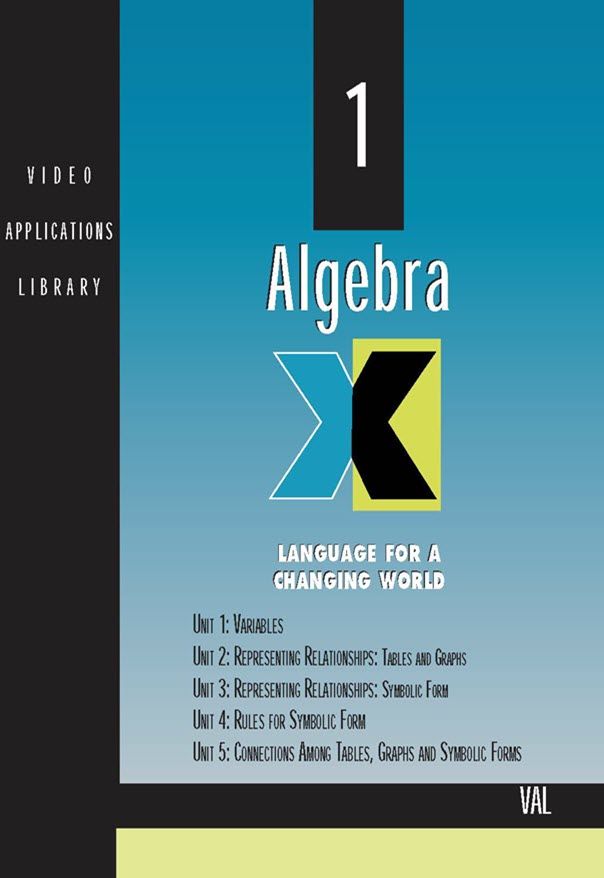Algebra: Language for a Changing World: Unit 5 Connections Among Tables, Graphs, and Symbolic Forms
Author: COMAP, Text by Gary Froelich
What algebra is used by police to calculate speeding fines? Can algebra provide a useful tool in helping our environment? Algebra: Language for a Changing World is an overview of the most essential early concepts in Algebra. Interesting real-world contexts and worked problems using real data introduce input and output variables, symbolic and graphical representation, order of operations, and linear relationships.
The five modules in this video series demonstrate basic algebraic concepts in contextual settings. The materials are intended for students who are beginning a study of algebra, perhaps in a prealgebra or first-year algebra course, but they are also appropriate for use in a middle-school setting.
Here are several ways in which these materials might be used in a curriculum:
- As the core of a middle-school unit on algebra.
- As an introduction to the concepts of algebra at the beginning of a first-year algebra course.
- As an introduction to topics in a first-year algebra course when those topics are studied. Since some modules make occasional reference to previous ones, this type of implementation may require showing a previous module in order to refresh students’ memories. Showing more than one module in a day is reasonable since they are short (6–8 minutes).
The print materials that accompany each module include a video viewing guide, which is designed to be completed by students as they watch the video; a set of discussion questions; a set of exercises; and a quiz. Completion of all materials for a given module should take 2–3 class periods of 45 minutes each.
These materials portray algebra as a dynamic subject. For example, variables are defined as quantities that change rather than as unknowns, and relationships among variables are given strong emphasis. This view of algebra is consistent with the COMAP philosophy that mathematics is best taught in the context of its contemporary applications. It is COMAP’s hope that the materials will help your students develop an appreciation for mathematics as a subject of as much, if not more, importance in the world around them as any other subject they study.
Unit 5: Connections Among Tables, Graphs, and Symbolic Forms (6:55)
Summary of the Video
The opening segment discusses sewage treatment. A table displays data involving a tank that is being filled, and the rate at which the tank is being filled is calculated from the table. A graph of the data in the table shows that the rate affects the steepness of the graph’s linear pattern. Development of the symbolic form from the table shows that the rate appears in the term containing the input variable. The second segment returns to Module 1’s sailboat design situation to show how the symbolic form of a linear relationship can be found from just two pairs of input/output values.
Video support materials are available as part of COMAP full membership. Each video is accompanied by a user's guide with reproducible student exercises and quizzes.

Mathematics Topics:
Application Areas:
Prerequisites:
You must have a Full Membership to download this resource.
If you're already a member, login here.